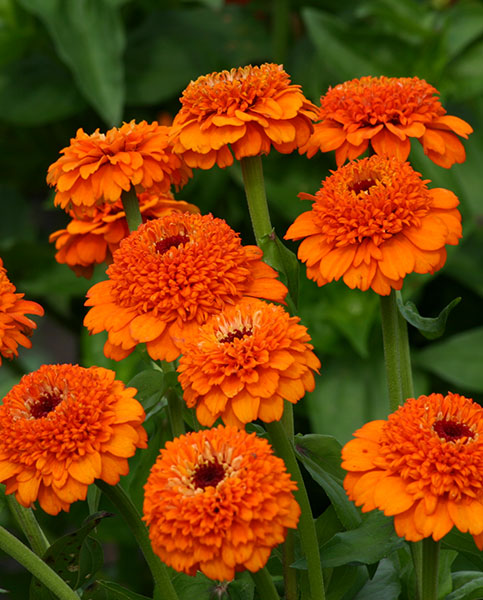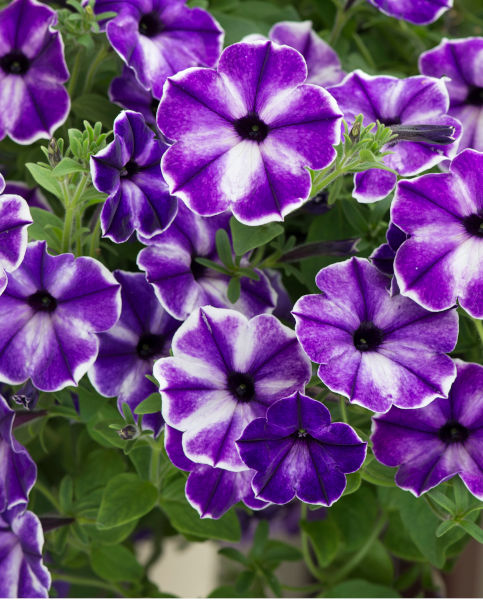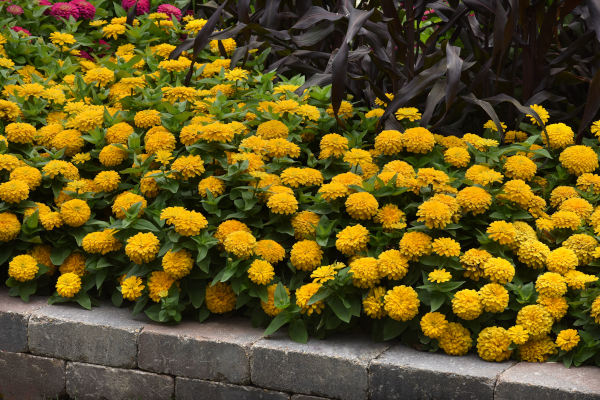How to grow Zinnia
Grown as annuals in UK gardens, Zinnias are one of the hardest working flowers in a garden - growing from seedling to flower in the space of several weeks. As part of the Helianthae and Asteraceae families - think Sunflowers and Daisies - Zinnia are a beautiful addition to any garden, with plenty of perks!
With a petite stature and fully matured size of 90cm, Zinnias are known for their upright stems with solitary flowers. They have a pest-resistant nature and provide colourful flora. Perfect for growing within flower beds and borders, Zinnia attracts pollinators such as bees, butterflies and birds with its bright petals that range in colour from vibrant purples, fiery reds, plush pinks and radiant yellows.
Ready to find out more about these speedy growers? Read on to learn all there is to know about growing Zinnia…

Key Information
Soil pH
Position
Hardiness

How to plant Zinnia
First of all, you will need to find a spot in your garden with enough sun. For full sun, 6-8 hours a day is ideal. However, make sure that there is some shelter available for Zinnia from heavy rains and winds - this can be in the form of a wall, fence, a structure or taller neighbouring plants.
Check your chosen position for soil drainage - poorly-drained soil will cause problems for Zinnia. At this point, add compost to improve the condition of the soil.
If you are planting multiple Zinnias from young plants, dig a hole twice the size and width of the root ball, add the plant, backfill with soil and leave 30cm of space between each plant to give plenty of room to grow.
Water in well to help the plant settle and establish itself.

What to plant with Zinnia
You may not have realised this - Zinnias can be grown in vegetable gardens alongside tomato or pepper seedlings due to their mutual love of full sun and warmth. Zinnia’s attractiveness to pollinators will greatly assist in pollinating your vegetable plot too.
In terms of companion flowers, look for summer-blooming sun-lovers that can add vibrancy to your flower beds and borders. Annuals such as Marigolds, Petunias and Begonias are all great picks and will add plenty of colour to your garden.
Please contact our excellent Customer Care Team if you would like any help or planting tips for your Zinnias. Below are a few ideas to help get you started.



How to care for Zinnia
Pruning & Deadheading
You can deadhead Zinnia once the flowering period is over to encourage more blooms in the next season. Zinnias thrive on pruning and also make excellent cut flowers - you can comfortably cut flower stems and Zinnia will continue to send out strong and healthy stems.
Watering
Zinnias are relatively drought-hardy and heat-tolerant although they enjoy a good splash of water at the base. Water twice a week to give your Zinnias about an inch of water weekly. In periods of wet weather, make sure that Zinnia has some form of shelter, as heavy rainfall can cause problems such as root rot.
Cold Protection
Zinnias are tender and will need cold protection. If grown in containers or pots, bring your Zinnia indoors before the first frost hits.
Pests & Diseases
One of the perks of growing Zinnia in your garden is their pest-resistant nature - they even repel certain forms of worms, bugs and ants. In a dazzling display of evolution, Zinnias can lure predator bugs to their flowers which then will eat other destructive pests and mites.
How to propagate Zinnia
To propagate Zinnia, let the flowers from the current season dry fully on the stem - do not cut them off! Once dried out, you can remove the seedheads and lightly press them to release seeds - these can be sown in pots in the following spring by starting around 8 weeks before the last frost.
Start with a small pot and fill it with seedling compost. Gently sprinkle your Zinnia seeds on top, cover each seed with a thin layer of soil, water in. Then and add a plastic or polythene bag to cover the pot - this creates the humidity needed for the seeds to germinate.
Once secure, place your seed pot in a warm and sunny position out of direct sunlight. Water regularly as needed until the second set of leaves has grown in - at this point, your seeds are ready for pricking out. Gently remove them from the soil by pulling the leaves and repot - the first set of leaves (the lowest) should be underneath the soil, with the second set of leaves above soil level.
Once established, you can safely plant your young plants outdoors in containers or borders and they should continue throughout the year.
Common Zinnia Questions
Do Zinnias come back each year?
Zinnias are not perennial and are planted as annuals due to their tender nature and fast-growing capabilities - they go from seedling to flower in just a few weeks!
What do Zinnias repel?
Zinnias can repel cabbage worms, cutworms, squash bugs and ants.
Do Zinnias like sun or shade?
To get the most from your Zinnia, grow in a position of full sun. While Zinnias are capable of growing in partial shade, growing in full sun will ensure vibrant colours, healthy blooms and more flowers.






